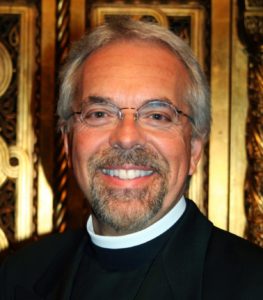
Fr Frank Marangos
Source: Oinos Educational Consulting
By Frank Marangos, D.Min., Ed.D., FCEP
“One of the clearest and most concrete facts of history is that men of spiritual resources may not only redeem catastrophe but turn it into a grand creative moment.” ~ Herbert Butterfield
Crisis is the cocoon of creativity. Indeed, the current Covid-19 crisis has stimulated abundant examples of creative innovation in public health, economic, education, and faith-based institutions. Resourceful ingenuity has additionally appeared in many family homes and neighborhoods. While the pandemic has undeniably inspired many levels of creativity it has, nonetheless, also generated societal fears, inertia, and depression. Why the disparity? Why is one person’s catastrophe another’s creative cocoon?
According to Kyung-Hee Kim a “creativity crisis is plaguing this country.” In her book, The Creativity Challenge: How We Can Recapture American Innovation (2016), Kim insists that “creativity has decreased in the United States since 1990 . . . because we are becoming less verbally expressive, less empathetic, less responsive, less humorous, less imaginative, less able to visualize ideas, less able to see things from different angles, less unconventional, and less able to connect seemingly irrelevant things together.” Kim additionally insists that “America has an increasingly limited number of individuals who are capable of finding and implementing solutions to problems the nation faces today. If this trend isn’t reversed soon,” she warns, “America will be unable to tackle the challenges of the future.” The good news is that creativity can be cultivated.
2020 marks the 105th anniversary of the publication of Albert Einstein’s groundbreaking paper on special relativity. Considered his “annus mirabilis,” 1905 is the year that the theoretical genius published four articles that stunned the field of modern physics. When asked what guided Einstein to creatively challenge the scientific community’s then prevalent views on space, time, mass, and energy, his wife Elsa exclaimed, “it was playing music!” In fact, the eccentric Nobel Prize-winning physicist confessed that he discerned the formula (E = mc2) for special relativity while playing his cherished violin called Lina.
Apart from his love of music, Einstein attributed his creativity to “combinatory play,” the practice of taking seemingly unrelated things outside the realms of science (art, ideas, music, thoughts) and blending them together to come up with new ideas. “Combinatory play seems to be the essential feature in productive thought,” he wrote in a letter to a colleague studying the thought process of mathematicians. “The psychical entities which seem to serve as elements in thought,” Einstein proposed, “can be voluntarily reproduced and creatively combined.”
But what exactly is combinatory play? Should its pedagogic rubric be advanced by the nation’s seminaries and institutions of higher theological education? And has combinatory thinking been responsible for the high-levels of creativity observed during the Covid-19 crisis?
Combinatory play is a creative thought process that ponders unrelated items and re-assembles them to solve problems, rework existing systems, and discern new possibilities. Similar to “analogical thinking,” Einstein defined combinatory play as the “act of opening up one mental channel by playfully dabbling in another.” In other words, it is a method of taking the unrelated and combining them to create something new. According to co-authors Karen Fox and Aries Keck, whenever Einstein was stuck with answering a mathematical problem or faced with a personal challenge, he would set aside the difficulty and play his violin. In their book Einstein A to Z (2004), the authors describe the scientist’s combinatory thought processes as “developing odd questions and subsequently visualizing their answers.”
Kim (2016; cited above) outlines five attitudes of creativity: (1) open-mindedness, (2) emotional expressiveness, (3) playfulness, (4) daydreaming, and (5) nonconformity. Similar to Einstein’s understanding of combinatory play, her idea of “playfulness” includes “approaching situations in exploratory ways.” According to Kim, “innovators are playful and structure their work in a way that frees their outbox thinking—which is limited by a work-play dichotomy—to find ideas/solutions that might not have been thought of using pure logic or common sense.”
Such “outbox” combinatory thinking is not new. Journalist and author, Arthur Koestler, for example, proposed the theory of “bisociation” in the 1960s to describe how creativity is enhanced through the combination of elements that ordinarily do not belong together. In his seminal examination of creativity, The Act of Creation (1964), Koestler describes creativity as something that “operates like a slot machine, relies on the mind’s pattern-recognition machinery, and requires the synthesis of raw material into new ideas.”
Koestler consequently coined the term “bisociation” to distinguish between the routine skills of “thinking on a single plane (single-mindedness) and the double-minded transitory state of unstable equilibrium (creativity) where the balance of both emotion and thought is disturbed.” One of the challenging yet inevitable byproducts of bisociation, however, “is the demolition of existing dogma.” Accordingly, the re-structuring of mental organization effected by new discoveries imply that “the creative act has a revolutionary or destructive side. The path of history is strewn with its victims,” he contends, “the discarded isms of art, and the epicycles and phlogistons of science.”
In her American Journal of Play article, To Think Without Thinking (2014), Victoria Stevens discusses the correlation of combinatory play to the creative process. According to Stevens, “combinatory play describes the conscious and unconscious cognitive playful manipulation of two or more ideas, feelings, sensory experiences, images, sounds, words, or objects. In combinatory play, players experiment with hypotheses,” she argues, “they play with possible outcomes, and they adjust to unexpected results and even failures.” Like Koestler and Kim, Stevens insists that “these players compare, contrast, synthesize, and break apart disparate elements or constructs in the service of re-envisioning a larger whole.” Once mastered,” she insists, “this special, imaginative combinatory play frees the mind and enables a fluid blend of conscious and unconscious cognitive processes.”
Combinatory play may, therefore, be defined as an act of imagination that transforms existing or known facts, ideas, or elements into novel forms. It is an essential component of creative thinking, inventiveness, and innovation. Most agree that such combinatory creativity requires proficiency of a three-step process of (1) analysis, (2) synthesis, and (3) implementation. It is a process that simultaneously occurs at both the unconscious and conscious level, and is not only foundational for creative thinking, but also plays a role in reflective, problem solving, and critical thinking. As it is consequently a process that has the potential of turning catastrophe in opportunity, it would be foolish not to cultivate a valuable attitude in the psyche of the nation’s future leaders.
According to the IBM 2010 Global CEO Study of more than 1,500 CEOs from 60 countries and 33 industries worldwide, chief executives believe that “more than rigor, management discipline, integrity or even vision, successfully navigating an increasing complex world will require creativity.” In fact, the Study identifies creativity as “the number one leadership competency of successful enterprises.” In order to successfully navigate future crisis and uncertainty, IBM recommends that “a new generation of leaders with creativity will, consequently, be needed.”
In Creativity, Technology & Education: Exploring their Convergence (2018) Punya Mishra and Danah Henriksen advance the recommendations of the IBM Global Study by challenging schools to care for and nurture, rather than constrain, creativity in students of all ages and disciplines. The essays in their book provide a broad analytic frame for thinking about creativity, technology and education and provide examples and strategies for the development and implementation of creative curricula.
James Webb Young outlines five essential steps of the combinatory creative process that may provide a valuable pedagogical framework for such wide-ranging initiatives. In his book, A Technique for Producing Ideas (2009), Young describes combinatory thinking as a thought process that resembles a kaleidoscope. “The capacity to bring old elements into new combinations,” he argues “depends largely on your ability to see relationships that follow a five-step process of 1) gathering material, 2) intensely working over the material, 3) stepping away from the problem, 4) allowing the idea to come back naturally, and 5) testing the idea in the real world and adjusting it based on feedback.”
- Step 1: Gathering specific and general material or fascination with a wide range of concepts.
- Step 2: Mentally examining the new material by looking at the facts from different angles and experimenting with fitting ideas together.
- Step 3: Putting the problem completely out of mind and doing something else that excites and energizes.
- Step 4: Stop straining on the idea so it will return with a flash of insight.
- Step 5: Submit novel idea(s) to criticism and adapt as needed.
In her 2017 Forbes article, Teaching Creativity is a Necessary Part of Undergraduate Education, Maria Klawe describes how her research has shown that creativity is a skill that can be taught, practiced and developed. Like IBM, and Mishra and Henriksen, she argues that the “world needs creative thinkers in all disciplines, people who can tackle complex challenges and develop innovative solutions.” Unfortunately, she contends, “our educational system focuses on teaching students convergent thinking — how to solve problems that have one correct answer (already known), instead of teaching students divergent thinking — how to come up with multiple solutions to open-ended, unscripted problems.” According to Klawe, “it is these types of open-ended and complex problems they will face as they pursue future careers.”
Fortunately, a growing number of colleges and universities have accepted Kim’s recommendations and are seeking to reverse the nation’s “creativity crisis” by advancing creative, divergent, bisociative, and combinatory thinking through a variety of campus initiatives. Examples of centers and institutes dedicated to creativity and innovation include Stanford University’s d.school, Harvard University’s i-lab, Oklahoma State University’s Institute for Creativity and Innovation, and Ball State University’s Center for Creative Inquiry. Other institutions are developing courses and programs devoted specifically to developing students’ creativity such as the University of Michigan at Ann Arbor’s interdisciplinary creative-process course, Vanderbilt University’s Program in Creative Enterprise and Public Leadership, and Wake Forest University’s Program for Creativity and Innovation.
The nation’s seminaries and institutions of higher theological education have the responsibility to affirm, nurture, and urge their graduates to cultivate creativity in themselves and in their respective future assignments. Theological education must, therefore, expose students to cutting edge conversations and equip them with attitudes, skills, and habits that will help them creatively respond to future crises and challenges that, like the Covid-19 pandemic, society and their communities will assuredly face.
In Growing Creative Leaders: A Multiple Case Study (2011), Karen Tilstra, Shirley Freed, and Erich Baumgartner report that “Christian institutions of higher learning have struggled to figure out how to preserve the spontaneous and viral quality of the Christian life that resulted in multiplying members and leaders.” Unfortunately, according to the three insightful researchers, “Christian leaders are faced with increasingly complex social contexts for which their training is not preparing them. While Christian leadership programs are multiplying, we have to ask if they are truly developing creative leaders able to face the basic questions people around the globe are asking.”
The question posed by Tilstra, Freed, and Baumgartner is of vital importance to the nation’s seminaries and theological schools. According to a task force of national educational leaders, faculty, and administrators, the upcoming 2020 Accreditation Standards of the Association of Theological Schools (ATS) should be revised according to core principles. In their article, Ten Principles of Educational Quality Behind the Proposed Standards of Accreditation (2019), the task force proposes the following ten key principles:
- Theological education is rooted in theological values.
- Theological education prioritizes student learning and student formation.
- Theological education requires communities of engagement.
- Theological education is contextually appropriate.
- Theological education demonstrates diversity.
- Theological education has appropriate institutional resources and support.
- Theological education requires sufficient and appropriate personnel.
- Theological education requires a healthy institutional environment.
- Theological education demonstrates careful institutional planning and evaluation.
- Theological education depends upon integrity, trust, and mutual accountability.
Significantly, the primary focus of the 4th key principle concerns the need for “graduate theological education to attend carefully to the contexts, communities, and constituencies in which, and for which, it is offered.” The standard underscores the urgent need for institutions of theological higher education to nurture graduates who are able “to respond to changing contexts with creativity and innovation.”
In his 1975 Commencement Address at St. Vladimir’s Orthodox Theological Seminary, entitled Continuity and Creativity, Jaroslav Pelikan exhorted an audience of graduates that “what they have received as a heritage from our Fathers, we must earn if we are really to possess it. Each generation of the Church has had to learn this lesson anew,” asserted the prolific Yale University scholar. “The Church is not a museum or a mausoleum, and its inherited tradition must not be permitted to become only the artifact of some glorious past. We are not simply pipes and conduits through which that message passes,” he insists, “but living, responsive, and, yes, creative participants in its ongoing life and history.”
Unfortunately, unlike their more secular counterparts, the nation’s seminaries and institutions of higher theological education have not adequately emphasized proactive opportunities for their students to become “creative participants in its ongoing life and history.” Apart from a scarcity of adequate funding, the underlying problem might include the lack of a comprehensive theological understanding of creativity and its distinctives. Fear and inertia associated with what Koestler describes as the “inevitable byproducts of bisociation” might also be responsible for the current delinquency.
Irrespective of the proclivity of religious institutions and their leaders to safeguard the status quo of their respective faith-based traditions, from what can be gleaned from newscasts, websites, and social media, the nation’s religious leaders have, for the most part, effectively engaged in creative combinatory thinking to respond to the current Coronavirus crisis. They have synthesized medical data, assembled governmental directives, and playfully rearranged them with the repository of their existing scriptural, pastoral, ecclesial, and theological continuities. In the end, they have creatively combined and appropriately implemented patterns and novel arrangements to effectively serve their respective constituents.
Examples of how faith-based institutions are serving their community members during the pandemic include, but are not limited to, live-streamed liturgical services, Twitter sermons, virtual candle lighting, synchronous bible studies, online-tray passing, drive-through confessionals, Palm and Easter Egg deliveries, Facebook gatherings, virtual egg hunts, Skype wedding and receptions, handless meal, grocery and hygiene care products deliveries, Global Seder campaigns to assist at-risk families, development of prayer and meditation apps, outdoor movie theaters, face mask designs, virtual funerals, window adorations, drive-thru testing sites, and daily Podcast reflections. Many communities have partnered with local social service nonprofits to provide meals and donations for shelters, prayer hotlines, diapers to the pregnancy care center, and provide a space for law enforcement, first responders and medical workers to eat their meals. Finally, to express solidarity, other faith-based communities have actually placed life-size photos of their members on pews. For a more comprehensive list, please visit the Heritage Foundation.
As a result of a score of creativity, many global and national denominational leaders have applauded the innovative thinking of their local clergy and communities. Pope Francis, for example, lauded the priests at the center of the northern Italy’s COVID-19 coronavirus outbreak area, for the “creative” methods they implemented to support and pastor their people during the current lockdown. “I want to pray for the creativity of priests,” said the Pontiff in his March 15 Angelus Address. Delivered from his library in the apostolic palace, the Pope contrasted priests with apostolic zeal with a hesitant and cowardly Italian romance novel character who is always running from the difficulties and obstacles. “In times of pandemic,” he insisted, “you shouldn’t be a Don Abbondio. The Church should not abandon people when they are in need.” Finally, in his video message for Easter Francis exhorted, “the creativity of love can overcome isolation.”
In his prophetic 2019 Christmas message, like Francis, Ecumenical Patriarch Bartholomew I, the spiritual leader of world’s Orthodox Christians emphasized the creative character of the Church which in times of crisis must “serve humanity’s existential needs, pouring out, like the Good Samaritan, “oil and wine” on his wounds, becoming a “neighbor” for everyone “who falls among thieves” (cf. Luke 10.25–37).” As such, the Christian, the Patriarch stated, “is a human being that is afire, loves God, humanity and beauty, is active and creative.”
Echoing the sentiments of the Ecumenical Patriarch, the Assembly of Canonical Orthodox Bishops of the United States commended the innovation and creativity of their priests who, during the Covid-19 crises, have and are creatively pouring the “wine and oil” of the Church on the isolated and sick. “We feel blessed,” one hierarch stated, “that through God’s grace, our clergy have found creative ways to minister to the needs of our people.” Expressing appreciation, another bishop wrote, “it is a joy to hear how some priests, using modern technology, support their parishioners by holding talks on various spiritual, moral, catechetical, and other useful subjects. Such creative approaches,” he insisted “strengthen the unity among people who together endure these difficult circumstances.”
Like their Christian counterparts, the Orthodox Union, an umbrella organization of traditional Jewish congregations around the country, advised celebrants to devise creative ways to serve their congregants. In her Jerusalem Post article Synagogues are Getting Creative Amid the Coronavirus Outbreak, Josefin Dolsten describes how local Jewish congregations have “stepped up to make sure members can get the services and the spiritual sustenance they need.” However, while “some Jewish clergy say the crisis is drawing their attention to aspects of their communities that they don’t want to see change,” she observes, “others see a silver lining in the fact that the public health crisis has caused them to take a hard look at practices that were ripe for revisiting.” Whatever attitude one assumes, it is apparent that most synagogues, churches, mosques and other faith-based communities have all creatively responded to the unforeseen repercussions of the current coronavirus outbreak with playful combinatory creativity.
A young country boy once paused from his morning chores to watch a butterfly struggle to emerge from a small gap in its cocoon. Distraught with the mêlée, the sympathetic child took a penknife and cut a larger slit in the silk hardened shell. Although the butterfly immediately emerged, its body seemed weak and feeble. The boy watched with increasing dismay as the butterfly strained to spread its delicate wings and fly. Tragically, it never happened.
The butterfly was never able to take flight because the effort needed to emerge through its cocoon’s narrow gap was significantly reduced. Only by squeezing itself through the slit could it have hoped for the life-giving fluid of its body to be forced to flow to its fledgling wings. Tragically, by avoiding the difficulty, the butterfly was cheated from enjoying its inherent legacy of transfiguration.
The Coronavirus crisis has provided the circumstance for faith-based institutions to draw on the depths of their sacred traditions, texts and wisdom to respond with love, grace, and pastoral creativity to the spiritual, emotional and physical needs of their respective congregations. Indeed, the creativity required to squeeze through the narrows has led to a wider range of innovative religious expressions. Fortunately, whatever the future may be, it is hard to imagine that the new forms of care and worship that have and are emerging will not leave a lasting legacy on the nation’s faith communities. We will just have to wait and see what kind of transfiguration emerges from the COVID cocoon!




1 Comment
Fr Frank is so smart it’s hard to add anything to his brilliant erudition.